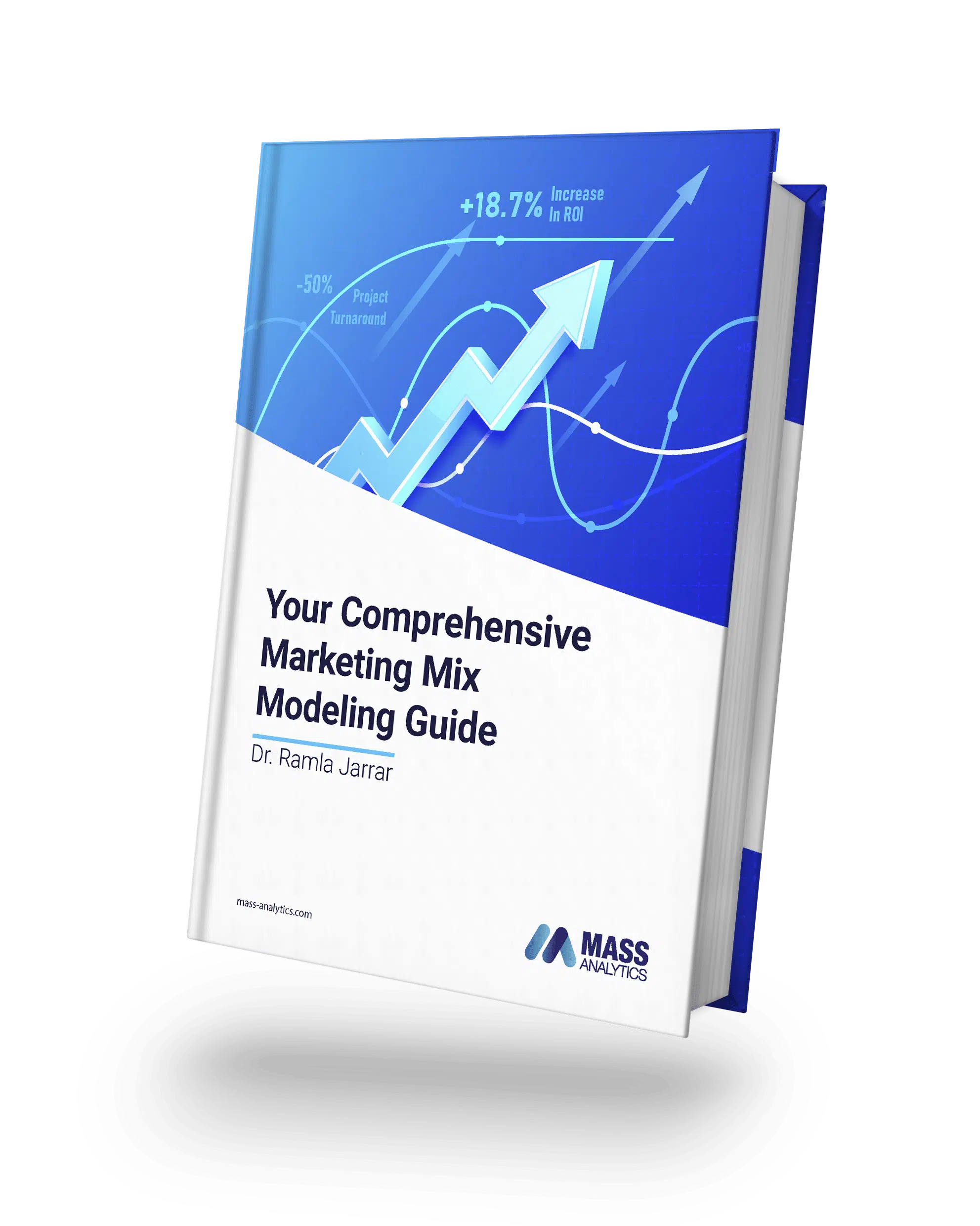Marketing Mix Modeling
Frequently Asked Questions
General Questions
How to Measure Marketing Effectiveness ?
Marketing effectiveness could be measured through Marketing Mix Modeling (MMM). It is an advanced analytical technique generally based on regression analysis. It enables marketers to:
- Measure ROI/MROI and impact of their media and marketing efforts.
- Optimize budgets across channels and campaigns.
- Simulate the outcome of various media and marketing plans.
→ MMM is based on applying regression techniques to historical time series to study the correlation between different independent variables ( e.g. Media, Marketing, Sesonality, Competition etc.) and a chosen KPI e.g. Sales, Conversion etc.
According to Gartner, measurement methods based on Marketing Mix Modeling Mesaurement can yield 20% to 30% improvement in the efficiency of marketing spending, primarily by optimizing media (Gartner 2016).
The Marketing Mix Modeling scene is changing fast with companies of all sizes showing interest in adopting MMM techniques to measure the true impact of their marketing activities and optimizing their budgets. This need is fueled by the rise in spending, the abundance of media channels and the good PR around the adoption of AI and Data Analytics techniques in the media industry.
Marketing Mix Modeling and Multi-Touch Attribution
If attribution is the process of assigning a causal link between marketing activity and sale, then MMM and MTA are both subsets of attribution. The primary distinction between Marketing Mix Modeling and Multitouch Attribution is that the former is an aggregated top-down approach, whereas the latter is a disaggregated bottom-up approach.
Marketing Mix Modeling is based on collecting aggregated data (rather than customer-level data) from various sources in order to determine the impact of marketing and non-marketing activities on a specific KPI, such as sales, unique weekly visitors, brand awareness, and so on. Regression and other econometric methods are widely used. Typically, this involves developing a model based on historical sales movements (or any other KPI movement) and statistically estimating the relationship between the modeled KPI and the various factors influencing it.
These methods have the ability to disentangle the impact of media and marketing activities on sales, calculate ROI by channel, and hence help optimize budgets while controlling for all exogenous factors.
MTA, on the other hand, focuses on customer-level data and attempts to identify the digital touchpoints that contributed the most to customer conversion and assign a credit to each. Credits can be assigned using a variety of methods (Single Touch Attribution, Rule-Based MTA (e.g. Linear, U-Shaped, Decay, etc.), algorithmic…)
Admittedly, thanks to the advancement of Internet technology, advertisers can monitor users’ exposure to advertising using cookie data. Cookies don’t fit well, if at all, in mobile apps, where mobile users spend 80 percent of their time. Nonetheless, Google’s single-sign-on (SSO) and Google Ad ID; Apple’s IDFA (identifier for advertisers); and Facebook’s SSO allow for accurate monitoring of users throughout devices. Furthermore, companies like LiveRamp and Experian can provide marketers with information about daily online purchases using only a single email address. This opens up the possibility of combining this data with that of online customers. When these two pieces of knowledge are combined, marketers may gain a detailed understanding of the consumer path to conversion.
Marketing Mix Modeling: Challenges and best practices
Running a Marketing Mix Modeling project allows brands to go beyond acquiring a functional measurement system. It provides them with applicable results that could trigger immediate actions. This is why creating an insightful and actionable Marketing Mix Model is crucial to reaching the company’s goals. And while there are so many factors to take into account, here is a list of trusted tips we’ve assembled. They should serve as a practical starting point to making the MMM projects more actionable.
- A time-efficient Marketing Mix Model
- A robust system to reduce human error
- An agile system that can quickly respond to change
- An optimized Marketing Mix Model
- Marketing Mix Modeling results must be confirmed and embraced by clients
Marketing Mix Modeling & Optimization
Optimization is one of the two layers of insight with which the analyst is meant to provide the client. The concept of Optimization is based on the concept of Diminishing Returns (as we move closer to the flat part of the curve, the channel becomes saturated and any investment in it becomes obsolete). In the optimization phase, the budget is re-allocated between the saturated channels to the less saturated channels, without increasing the overall budget. This will result in an increase in the overall revenue, as illustrated in the following chart.






